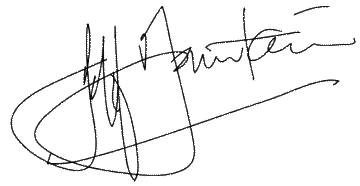The fourth of a series from Paul’s time to today via the Moravian church, in preparation for the Festival of the Nations in Herrnhut, May 25-28, 2007
In the back streets of the small Dutch town of Naarden, twenty minutes’ drive outside of Amsterdam, is the modest mausoleum of a man known globally as the ‚ÄòFather of Modern Education‚Äô. Few Europeans recognise his name but any Czech would proudly testify that Jan Amos Comenius is their greatest national hero‚Äìnext to Jan Hus.
Although born in Moravia, the tumultuous times in which he lived steered him from country to country and finally to Amsterdam in Holland., where he spent his last decade.
Comenius’ parents had died when he was still young. As members of the Brethren, they traced their roots back to the Hussites, followers of Jan Hus. Decades after his martyrdom in 1415, the Hussites had formed their own church, the Unitas Fratrum, or Unity of the Brethren. They took this step only after sending out emissaries in a vain attempt to find existing churches to which they could join themselves. Also called the Ancient Moravian Church, it was in fact a Protestant Church, half a century before Luther!
As Luther, Zwingli and Calvin catalysed this huge upheaval in the spiritual landscape of German- and French-speaking Europe, the Brethren rose up on the side of the Reformation.
Comenius–in Slavic, Komensky–was a young teacher of 26 years when the Thirty Years War broke out in 1618. His homeland became embroiled in the drawn-out struggle between the forces of the Reformation and the Counter-Reformation. A revolt by the Protestant nobles eventually ended in victory for the Catholic House of Hapsburg at the Battle of White Mountain in 1620. Bohemia and Moravia were now firmly under Catholic control.
Options
The Brethren found themselves on the losing side. They had few options: recant, be killed, go underground or leave the country.
On several occasions, Comenius had already had to flee from hostile soldiers. In one such flight his wife and child died. All his written manuscripts hidden under the floorboards of his house had gone up in flames.
With the Brethren now scattered by persecution, Comenius found himself in 1628 shepherding a small straggling band of refugees across the mountainous border to safety in Poland. As they stopped to take one last look back at their homeland, Comenius prayed for God to preserve a ‘hidden seed’ in that land that would one day glorify God‚Äôs name.
The refugees were welcomed in Lissa (Lezno), Poland, which became a ‘centre in exile’ for the Unitas Fratrum. Comenius was consecrated as bishop and appointed head of the college the Brethren established there. He remarried, with the daughter of another bishop, and enjoyed two peaceful decades writing and developing further his educational ideas.
And very progressive they were. Education should be made available for all, rich and poor, girls and boys, he insisted. ‘The teacher must be kind and fatherly, must give both praise and reward, and must always, where possible, give the children something to look at,’ he wrote.
All knowledge, he believed, was integrated in God’s Truth. Since everything would be reconciled together in Christ, he taught, there was a comprehensive cohesion to all wisdom. All truth was God’s truth. Comenius developed this idea into what he called Pansophy (all wisdom), based on Colossians 1:28 – ‘we proclaim him, admonishing and teaching everyone with all wisdom‘.
In a truly radical innovation, Comenius developed the world’s first picture book for children, a concept taken for granted today. Learning should happen through all the senses, he believed, not just rote-learning. It should be experiential as well as cognitive. He took children on ‘field-trips’ to the local blacksmith to let them hold the hammer and smite the molten metal themselves.
Invitations
From Poland, Comenius’ reputation as an educator began to attract invitations. Cromwell asked him to come to England, and Parliament considered founding a college for him before civil war broke out. Governor Winthrop of Massachusetts invited him to become the first president of Harvard College but he preferred to stay closer to his flock in Poland. With Queen Christina’s help, he engaged in school reforms in Sweden, hoping in vain to gain support for the Brethren in Bohemia. He visited other scattered Brethren in Transylvania (in Romania today) and Hungary.
When Protestant Sweden invaded Poland in 1655 and was defeated, Catholic fury was pented on the community in Lissa. Once again Comenius lost his library and manuscripts and he was forced to flee. He was offered refuge in Amsterdam, where he continued to help his scattered flock, printing new Bohemian Bibles, and adding to the over 150 titles in his name. One of his last projects was to update his history of the Brethren, The Order of Discipline. This book, we shall see, would help revive the Brethren’s Church.
The honour in which Comenius has continued to be held by believer and non-believer alike is symbolised by a statue outside the old defence walls of Naarden, a gift from the then-communist government of Czechoslovakia, in recognition of ‘a world reformer in education, literature and philosophy’.
His noble image is also etched on Czech money bills–both the old 20 korun communist variety and the new 200 korun post-Communist issue–with, in fine print, the words: Jan Amos Komensky 1592-1670.
Till next week,
Jeff Fountain
Till next week,
